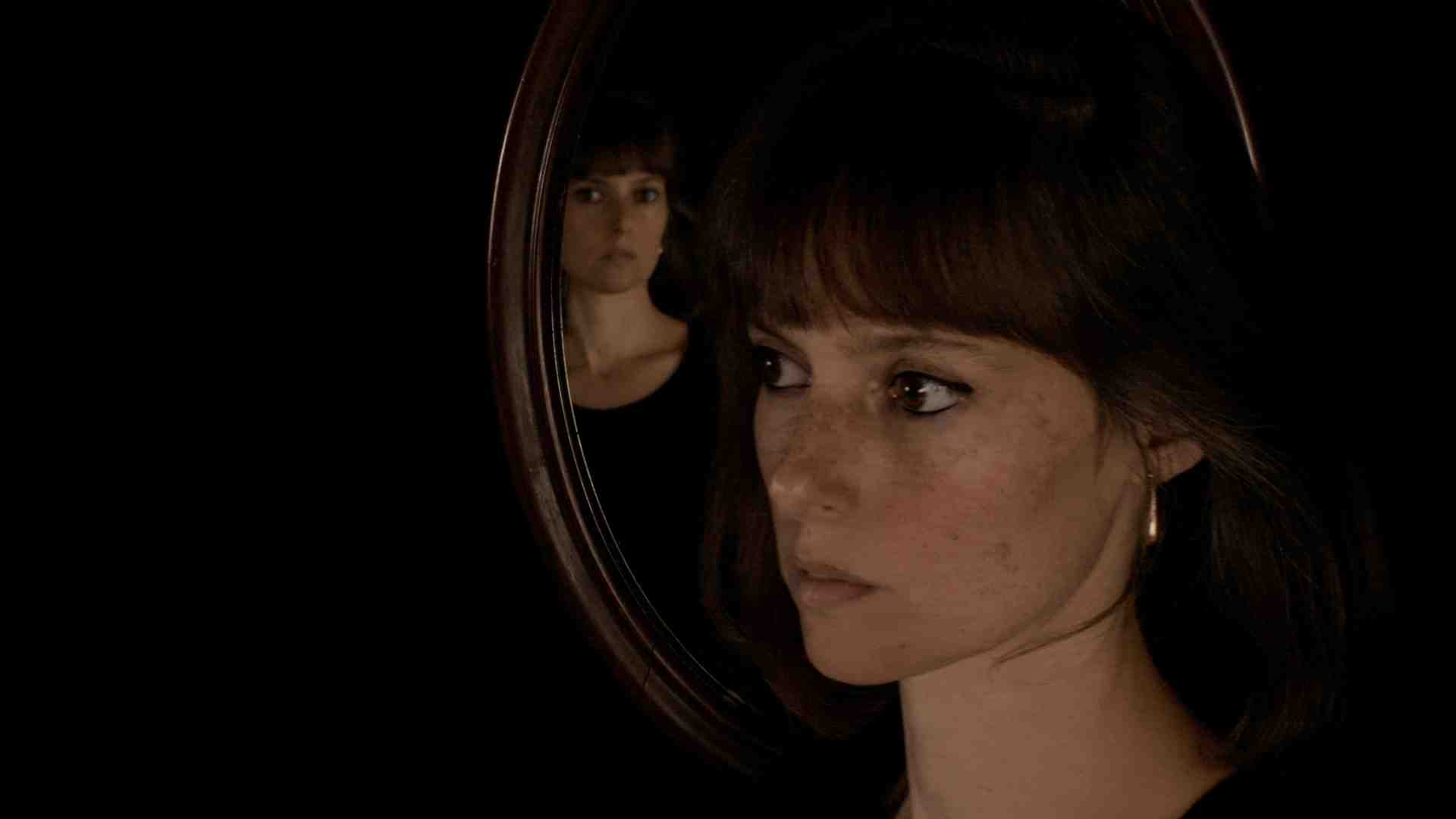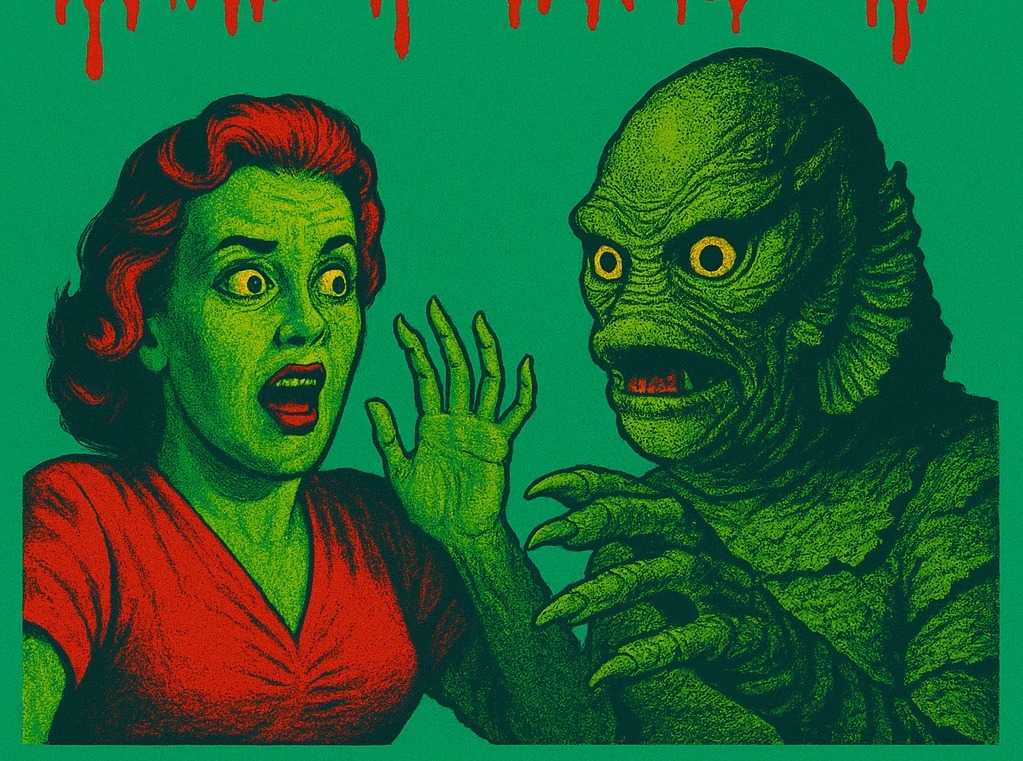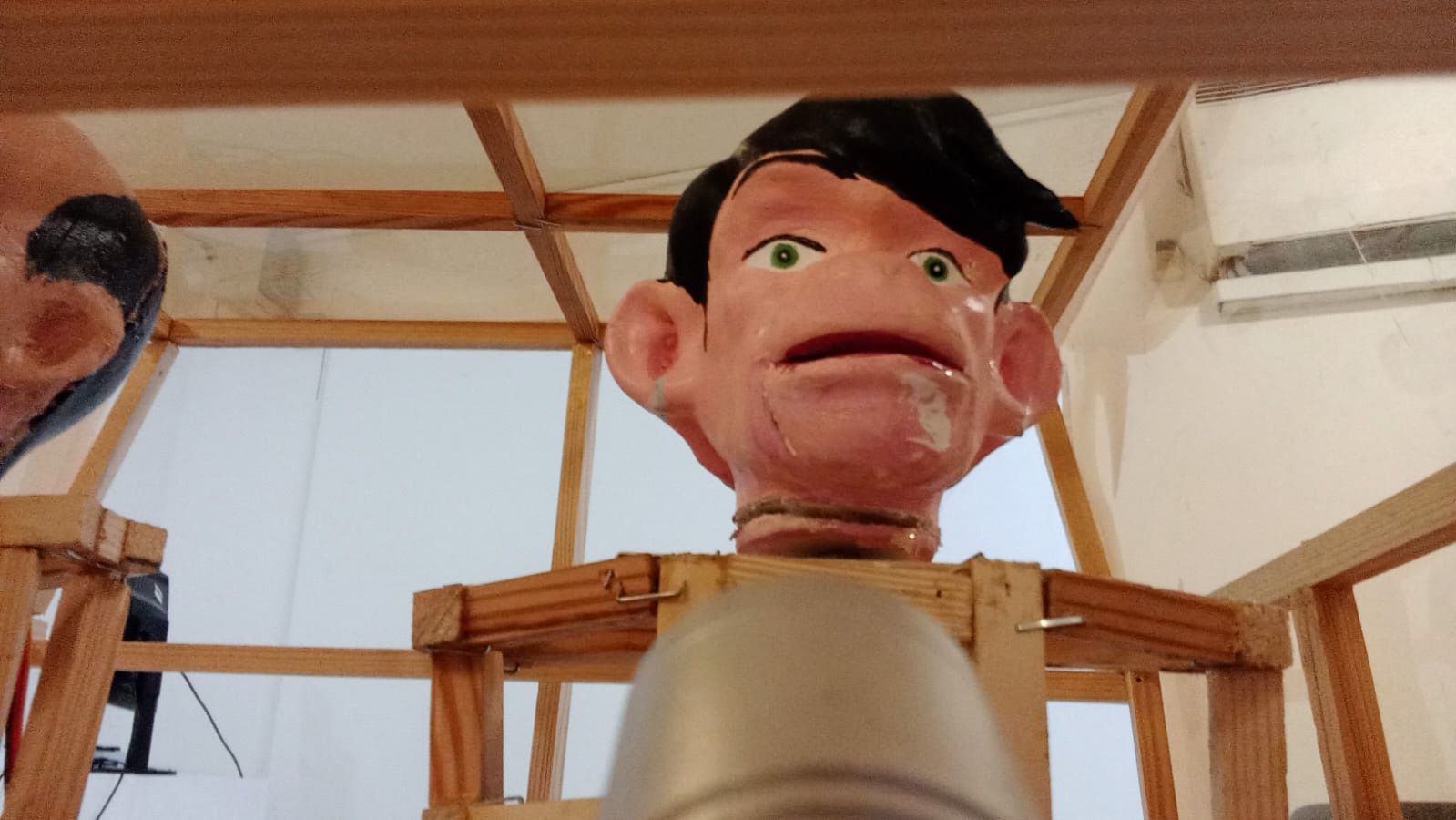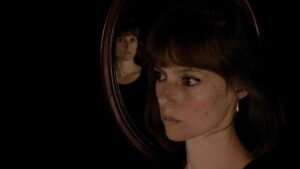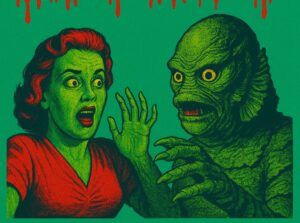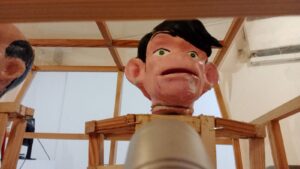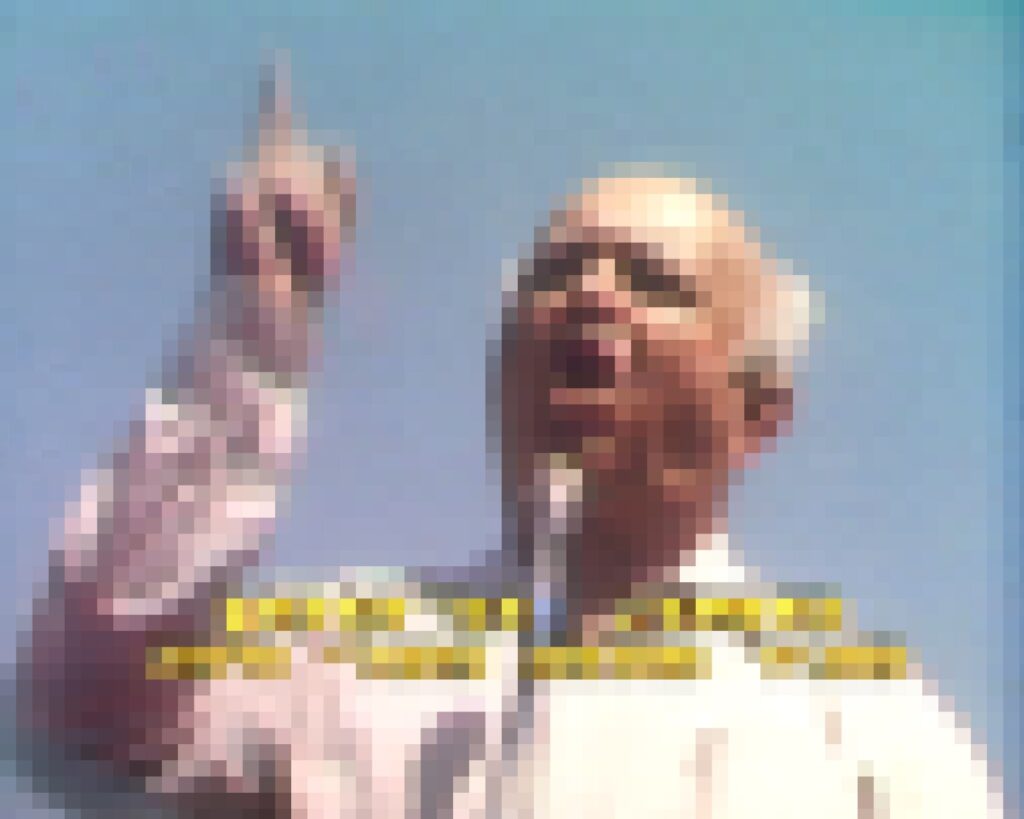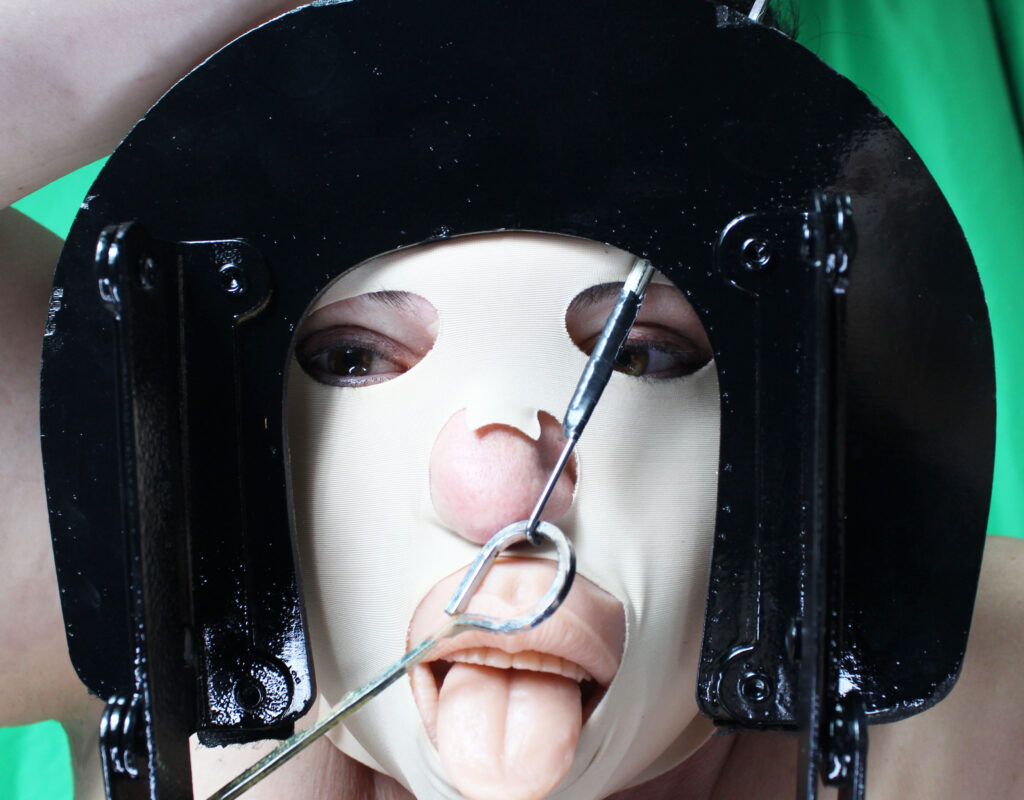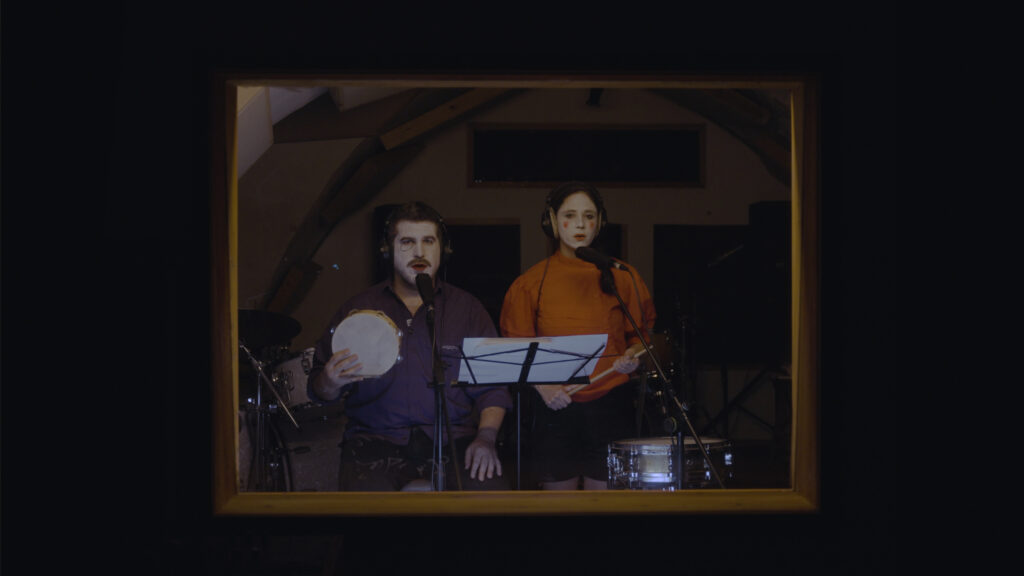Complementary Effect
Complementary Effect
The “Complementary Effect” exhibition explores how cinematic and theatrical effects create a universe that departs from the viewer’s usual sense of truth and falsehood. The works investigate visual and mechanical devices that give coherence to narrative, even when we can plainly see the strings holding the spacecraft, the rubber monster, the street façade, and the deliberate manipulations of camera and sound. The viewers accept the conventions that allow for a complete world to take shape before their eyes. In this sense, the truth and fiction of reality itself are suspended, and, in effect, lose their meaning. This logic might help us reflect on the reality of our present era, where the very possibility of holding on to concrete truth is fading, and socio-political discourse struggles to agree even on basic facts. What can be said about reality through the way we look at imagined worlds? And how might accepting fiction as a form of truth help us speak about reality?
Neo-Kayfabe
Kayfabe is a concept from professional wrestling (formerly WWF, now WWE). It originally referred to the narrative around the matches, in which everything in the ring is treated as real, even though the fights are pre-planned fights and the characters are deliberately exaggerated. For years, this concept was insider knowledge within the industry, while audiences were presented with the spectacles as if they were genuine.
Neo-kayfabe marks a shift to a new phase, in which the boundaries between reality and fiction are blurred even further. By now, the audience knows the fights aren’t real—yet the ambiguity only deepens. The staging is no longer hidden; instead, the spectacle unfolds on the edge of belief, where it becomes impossible to tell what’s real and what isn’t. Still, the audience chooses to believe—or rather, to set aside the question of truth—and take part in the game, fully aware that it’s all part of the show. Much of the drama, violence, and conflict between characters is orchestrated to build suspense, but the audience responds as if it were real.
This interplay between truth and fiction creates a space where everyone knows the performance is staged. Yet viewers still choose to believe and invest emotionally, intensifying their experience through an unspoken agreement between creators and audience. This agreement produces a rich experience, allowing spectators to help shape the narrative with their reactions, their engagement before and after events, and their emotional allegiance to particular sides. It also creates room for flexibility, surprise, twists, and manipulation of expectations—sometimes even allowing truth to emerge through fiction. Ultimately, this collaborative agreement generates a powerful bond by fostering an emotional, collective, and narrative experience of a “truth”—one that, while independent of factual truth, still feels meaningful, even though everyone knows it isn’t real.
To understand how we’ve come to accept the logic of a cinematic universe, the term neo-kayfabe offers a useful framework for thinking about the age-old influence of cinematic and theatrical effects. In the 1950s, low-budget B-movies brought horror and science fiction to the screen, often revealing their artifice: plastic sets, rubber costumes, and visible strings pulling bats in the background. Yet, audiences flocked to these films, willingly entering these cinematic worlds for a while. Even when the illusion was unconvincing, viewers chose to play along, believing for as long as they sat in the dark theater, consciously ignoring the strings that held the set together. In fact, this is the only way to be persuaded by a film—to experience the truth, horror, and fantasy it offers.
The concept of neo-kayfabe expands beyond cinema to other domains like politics and popular culture. Politicians, for example, often dramatize events and situations, and audiences are aware of the performative or exaggerated nature of their rhetoric. Still, people engage with these narratives, so long as they serve shared emotional, ideological, or communal purposes. This dynamic deepens public engagement and reinforces group identification. Critics may point out the gaps between narrative and fact, but in a culture already accustomed to a certain level of performance, it‘s nearly impossible to persuade others to distinguish truth from fiction, or to abandon their collectively embraced suspension of disbelief.
But what does neo-kayfabe actually mean once we step outside the cinematic-theatrical effect and into reality? Can we learn about reality through the dismissal of truth itself? Over time, the B-movies mentioned above have become cult classics—not despite their visible strings and plastic props, but because of them. Perhaps it was precisely this recognition of what was meant to be concealed—the visible machinery of the illusion—that gave these works their lasting power all along.
Can we encounter reality at the exact moment we recognize fiction—when we glimpse the strings at work? Can truth be salvaged from its fleeting appearances within fiction, from within the façade that holds the entire narrative together? How can we act in a world where illusion and effect are laid bare?
*Thanks to Omer Benjakob, who introduced us to this concept on his podcast with Michal Zoran, In My Opinion, Anyway (in Hebrew), particularly in his conversation with Josefine Reisman, author of Ringmaster: Vince McMahon and the Unmaking of America, Atria Books, 2023.
~
The Creeping Shadow (2025), installation, Adar Goldfarb
Adar Goldfarb’s kinetic shadow installation stages an encounter between chance and order. A potted plant rests on a rotating platform, as the light source tracks its movement. At a certain moment, a brief revelation occurs: the shadows align into a recognizable image—only to dissolve once again into abstraction.
A woman runs away from something (2024), single channel video (19:57), Yasmin Vardi and Beatrice Vorster
This experimental film draws on the framework of a horror subgenre and reimagines it from within. It deconstructs cinematic archetypes by stripping the story down to its purest form. Sometimes, it reinterprets familiar narrative and structural conventions; other times, it dismantles them while playing with suspense devices, clichés, and moments of vulnerability. The film toys with the power of concealment, reaching for what remains hidden through humorous techniques of disappearance and reinvention. Narrative control emerges as a central theme. In this context, reality becomes a negotiable territory—where stories are dictated by those who wield the tools of manipulation.
The Tenant (2025), installation, Noa Yafe
Upon entering the dark space, time seems to stretch as the viewer is drawn towards a distant wall where a Gothic-style mirror hangs, flanked by two matching wall sconces.
The reflected world multiplies and warps, splitting into different versions of itself, until the original mirror becomes a passage into a triadic encounter, where the viewer sees themselves, while also glimpsing the back of another.
The Vanishing Act (2025), installation, Omer Sheizaf
The Vanishing Act is a performative installation that uses theatrical effects and features objects from the world of theater that “perform” scenes of destruction and ruin. These objects are stripped of drama through their exposed mechanisms and function as deconstructed devices. The installation reveals the mechanism behind the effect, highlighting its materiality: light, movement, and sound.
The first piece is a scenic model of a dismantled Doric column, suspended in mid-air and moving independently. Sheizaf references Gustave Doré’s Death of Samson (1866), in which Samson topples the gates of Gaza. The object captures a dramatic moment of collapse while simultaneously underscoring its theatrical nature.
At the center of the space stands a mechanical puppet theater—a wooden model of a car with a partial façade—housing a dubbed dialogue between a spiritual teacher and a monkey.
Thanks to: Liam Chambon, Idan itzhaki, Nomi Chaya, Yoav weinfeld, Ariel Brown, Johad Arkun, Tal Shalem, Eili Levy,Yonatan Geron, Ofer Laufer, Haviv Kapzon
Looking Glass (2025), video, Yasmin Davis
Using basic means such as camera movements, lighting, and mirrors, without any digital effects, Davis creates moments of exposure and concealment, perspective shifts, and reversals between subjects and objects.
~
Artist: Yasmin Davis, Adar Goldfarb, Omer Sheizaf, Yasmin Vardy and Beatrice Voster, Noa Yafe
Curators: Udi Edelman and Leila Rose Bari
English Translation: Noa Shuval
CDA Holon, 2025
